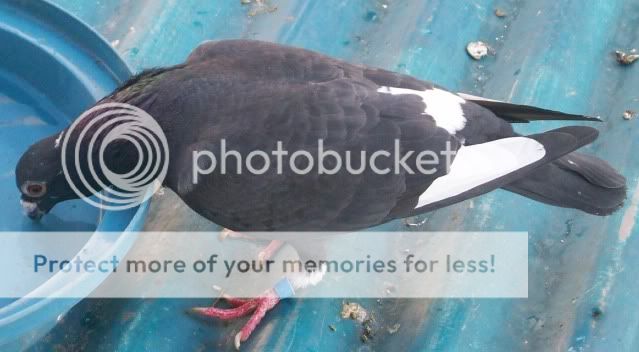Share lang some of my pigeon pictures...
Good Evening Sugbo
Fly high...
Results 141 to 150 of 801
-
01-14-2010, 06:23 PM #141
-
01-14-2010, 06:27 PM #142
 How to Spot a Good Homing Pigeon
How to Spot a Good Homing Pigeon
How to Spot a Good Homing Pigeon
How to Spot a Good Homing Pigeon
Owning, breeding, racing and training homing pigeons is a fun and rewarding activity. If you are interested in acquiring pigeons as a hobby, make sure you know how to spot a good homing pigeon. That's right-some birds are better suited for homing activities than others. Read this article to learn the characteristics of a quality homing pigeon.
Step 1 --- Examine the pigeon's feathers. They should be smooth, slippery and full of natural powder.
Step 2 --- Look at the pigeon's legs and feet. They should appear white and full of powder. White legs are a sign of health in a pigeon.
Step 3 --- Check out the pigeon's pectoral muscles. If a pigeon has weak pectorals, its tail sticks up in the back. The base of a weak pigeon's tail may have a dent. A healthy pigeon has a nice, straight tail with no dents.
Step 4 --- Stroke the bird's wing muscles, chest and abdomen. The muscles should feel firm and appear streamlined. If the pigeon's bones running along its abdomen are too deep, the bird likely has poor stamina and is a slow flier.
Step 5 --- Peek for gaps between the wing feathers; this is a sign of a poor flier. A pigeon with strong wing muscles should attempt to pull his feathers back into place as you try to examine his wing feathers.
Step 6 --- Observe the bird for signs of illness. Red mites and lice are common parasitic pigeon ailments that you can see. Yellow or white lesions in the mouth or throat indicate canker sores. A nasal discharge or mucus-like pus in the nostrils is a sign of a respiratory disease called roup. If a pigeon looks unhealthy, chances are it is.
Step 7 --- Ascertain the pigeon breeder's "stock sense." This term implies a person is naturally good with animals. If the breeder does not seem knowledgeable, comfortable or happy around his pigeons, chances are this isn't the best place to purchase a homing pigeon.



-
01-14-2010, 08:44 PM #143

- Join Date
- May 2009
- Gender

- Posts
- 2,079
gudevening sa pigeon lovers here in cebu
-
01-15-2010, 06:33 PM #144
-
01-15-2010, 10:58 PM #145
-
01-17-2010, 08:36 PM #146

- Join Date
- May 2009
- Gender

- Posts
- 2,079
pit senyor pigeons
-
01-17-2010, 09:26 PM #147
i have many american pigeons then maglisod naku og care kay daghan na sila.unsaon pag ela if babay or laki?im planing to sell them here. if someone interested.eheheheheh.
-
01-18-2010, 10:25 AM #148Junior Member

- Join Date
- Nov 2009
- Gender

- Posts
- 243
@junax
sir nindot imo pati...sir junax member ka sa mcrpa?i tried to go over their website but i think u cannot interact to the members coz it wont possibly register u in. though there is an info on how to join the group, but i want to know more about the club...nahan ta ko moJoin..can u advise.thanks.
-
01-18-2010, 05:15 PM #149
-
01-18-2010, 06:44 PM #150
Advertisement
Similar Threads |
|






 Reply With Quote
Reply With Quote

